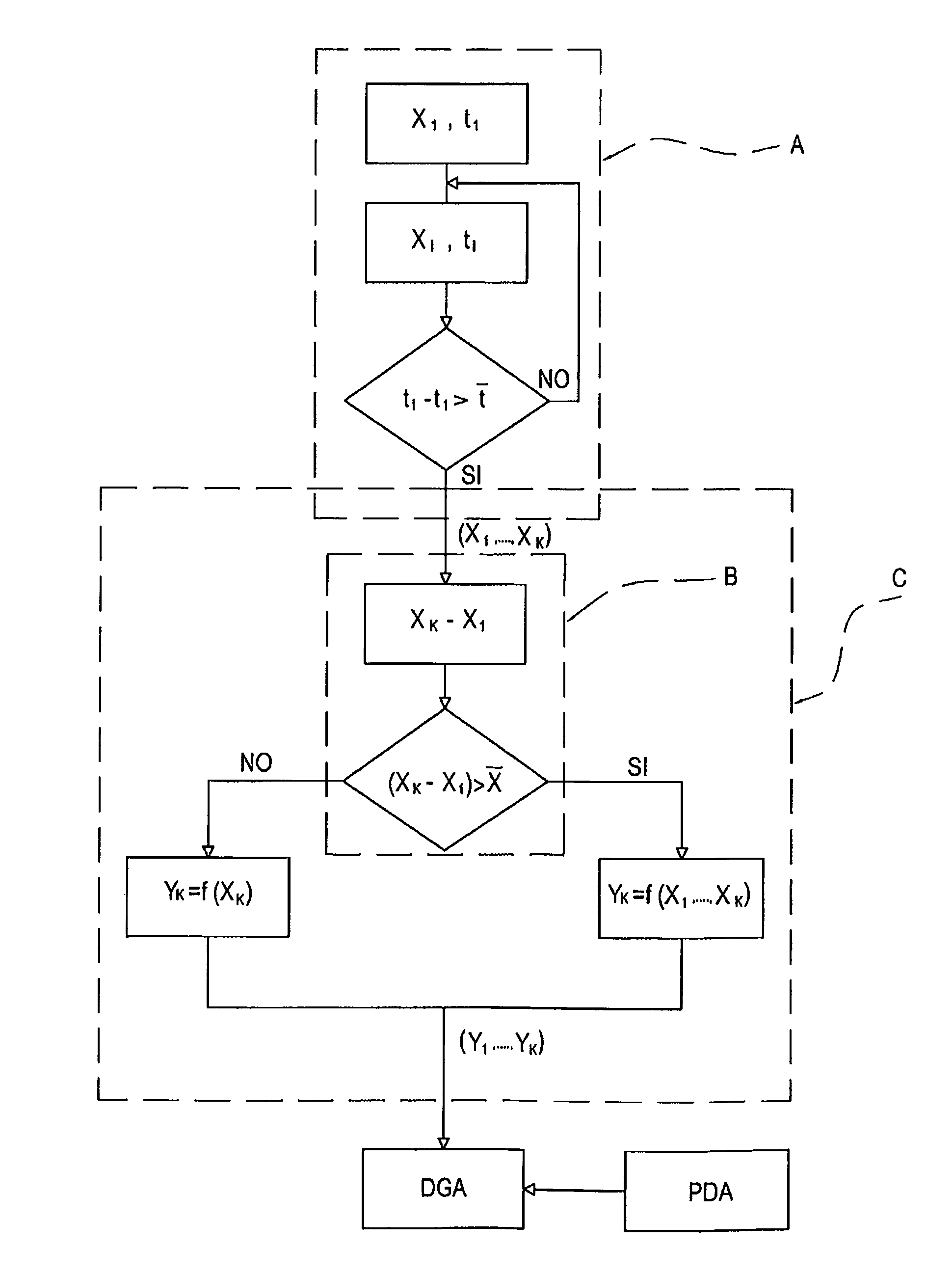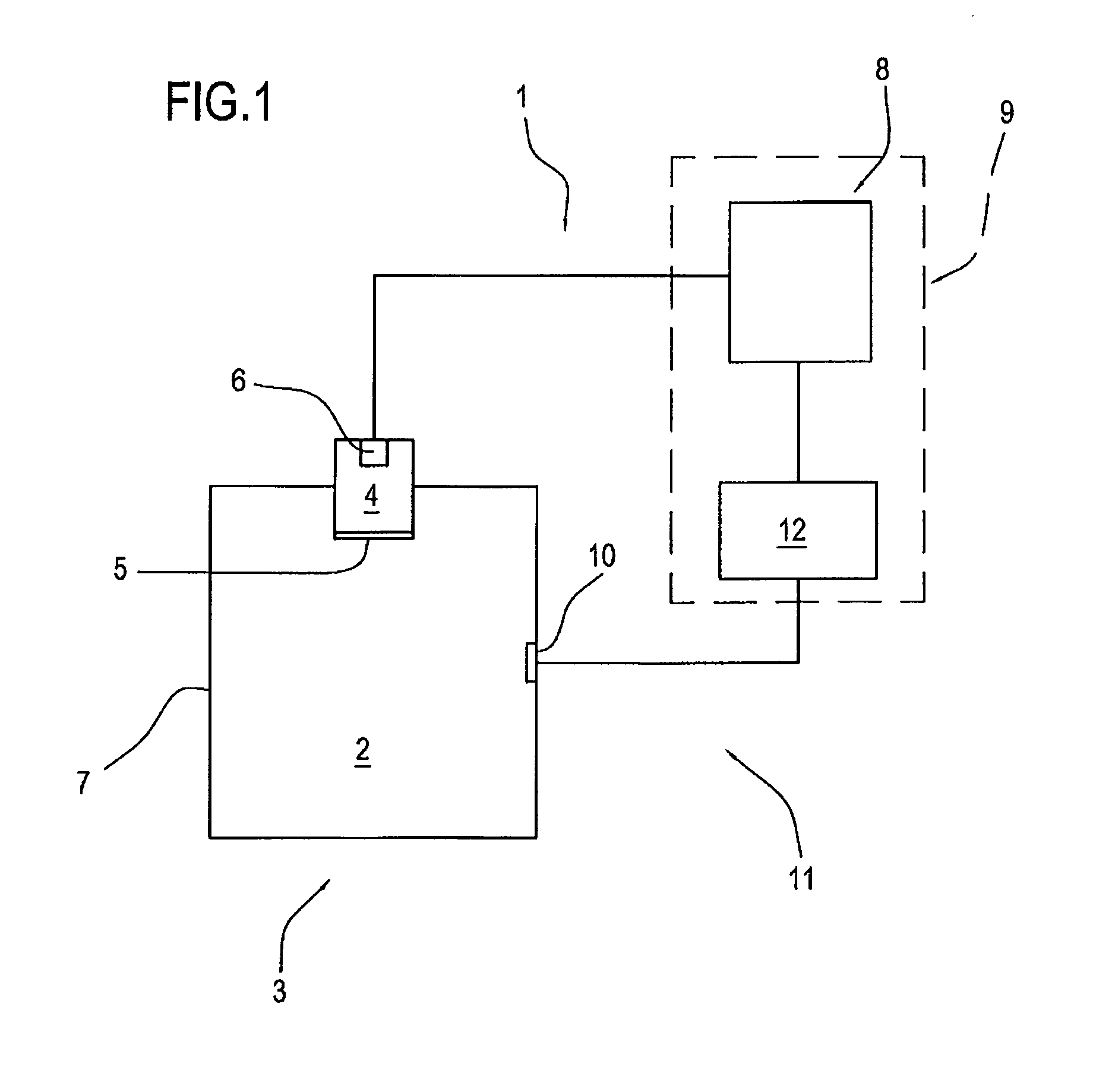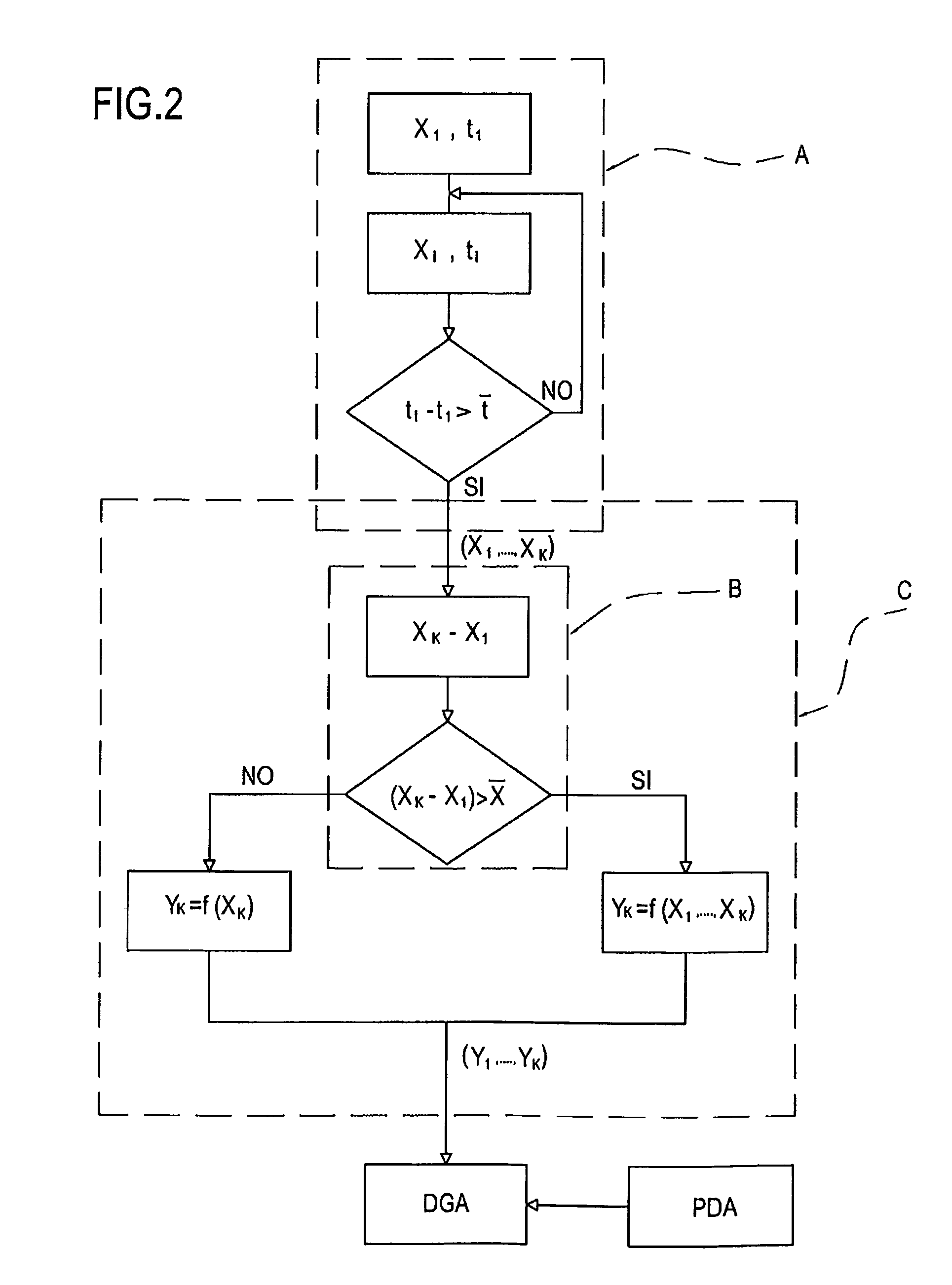Method and device for deriving the concentration of a gas dissolved in an electrical insulation oil
a technology of electrical insulation oil and concentration method, which is applied in the direction of gas dispersion analysis, instruments, testing water, etc., can solve the problems of significant limitations in partial discharge, formulas that do not take into account dynamics, and underestimated values
- Summary
- Abstract
- Description
- Claims
- Application Information
AI Technical Summary
Benefits of technology
Problems solved by technology
Method used
Image
Examples
Embodiment Construction
[0047]The numeral 1 in FIG. 1 denotes a device according to this invention.
[0048]The device 1 is a device for deriving the concentration of a gas dissolved in insulation oil 2.
[0049]More specifically, the device 1 is a device for deriving the concentration of a gas dissolved in the insulation oil 2 of an electrical apparatus 3 (typically a transformer but possibly also a cable or other oil-insulated electrical apparatus).
[0050]Derivation of this kind is preliminary to analysis of the gases dissolved in the oil 2, called DGA (dissolved gas analysis).
[0051]As is known, this type of analysis (DGA) is used for diagnostic purposes for deriving information about the condition of the insulation of the electrical apparatus 3.
[0052]In effect, the gases dissolved in the oil 2 are generated by partial discharges that take place in the oil (or in parts of the electrical apparatus 3 subjected to the electric field and in contact with the oil 2) or by overheating of the oil 2. Both of these condi...
PUM
| Property | Measurement | Unit |
|---|---|---|
| concentration | aaaaa | aaaaa |
| permeable | aaaaa | aaaaa |
| time | aaaaa | aaaaa |
Abstract
Description
Claims
Application Information
 Login to View More
Login to View More - R&D
- Intellectual Property
- Life Sciences
- Materials
- Tech Scout
- Unparalleled Data Quality
- Higher Quality Content
- 60% Fewer Hallucinations
Browse by: Latest US Patents, China's latest patents, Technical Efficacy Thesaurus, Application Domain, Technology Topic, Popular Technical Reports.
© 2025 PatSnap. All rights reserved.Legal|Privacy policy|Modern Slavery Act Transparency Statement|Sitemap|About US| Contact US: help@patsnap.com



